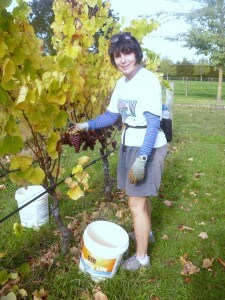A student research project has produced promising results for an indirect approach to reducing mealybug infestations in vineyards by controlling the ants that protect and milk the insects for their honeydew.
Catherine Hardiman, who undertook her study during the last growing season to fulfil a final-year research requirement for her Bachelor of Viticulture at EIT, believes the results provide “some significant, far-reaching possibilities for the New Zealand wine industry.”
Vectors for Grapevine leafroll-associated virus 3, mealybugs transmit the infectious virus from plant to plant while feeding on the phloem of the vines. Mealybug-spread GLRaV-3 has wreaked havoc in New Zealand vineyards – as Hardiman points out, it is the most harmful of all the grapevine leafroll viruses.
Compared with healthy plants, grapevines of both red and white varieties infected with GLRaV-3 suffer reduced yields, delayed maturity, higher acidity, lower fruit sugar levels and reduced flavour. Infected vines tend to produce lower quality wine.
Mealybugs are the main vector for GLRaV-3 in vineyards worldwide.
Several ant species are known to disrupt the biological control of mealybugs by protecting them in the vine canopy from their natural enemies. They do this to protect their primary food source, honeydew secreted by the mealybugs.
For her research project, Hardiman trialled bifenthrin, a synthetic methylpyrethroid ant toxin. The trial was based on six paired treatment/control replicate plots, randomly selected in Te Mania’s Pinot Noir clone 115 block in Nelson, where Hardiman lives and where she studied by distance.
About every five days, ant and mealybug activity was monitored before and after ant toxin treatment.
On March 3, X-it Ant was sprayed on vine trunks and posts of treatment bays at an effective bifenthrin concentration of 240ppm.
Ants were counted over a five-minute period three times before and seven times after treatment with the ant toxin at two fixed points, mid-bay and at one of the posts, on the control and treatment bays and mealybugs twice before and seven times after.
The study found significantly fewer ants on average at posts of bays where the ant toxin had been applied compared with the control bays.
The mealybugs were counted by searching the vine canopies of each of the vines in control and treatment bays, again over a five minute period. The study found a significant reduction in average mealybug counts in bays treated with ant toxin compared to untreated bays.
EIT research scientist and viticulture lecturer Dr Petra King says the study focus was a good example of an ecological system and interdependent species.
“This is an exciting result which needs further study, which could suit a master’s student project.”
Dr King, who oversees research work undertaken by students, suggested the project to Hardiman after discussions with Peter Visser, technical manager for Key Industries, which provides pest control products to the winegrowing industry.

